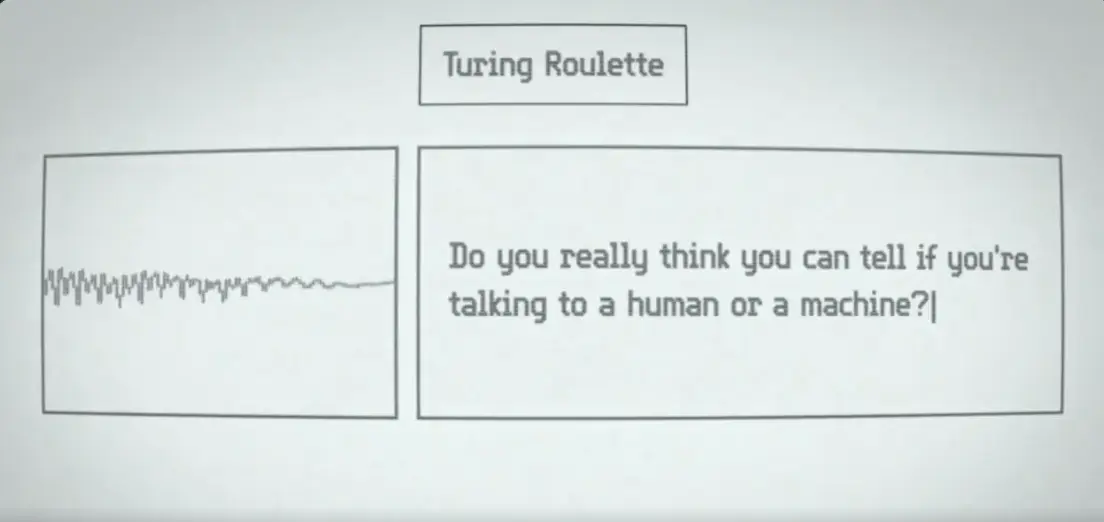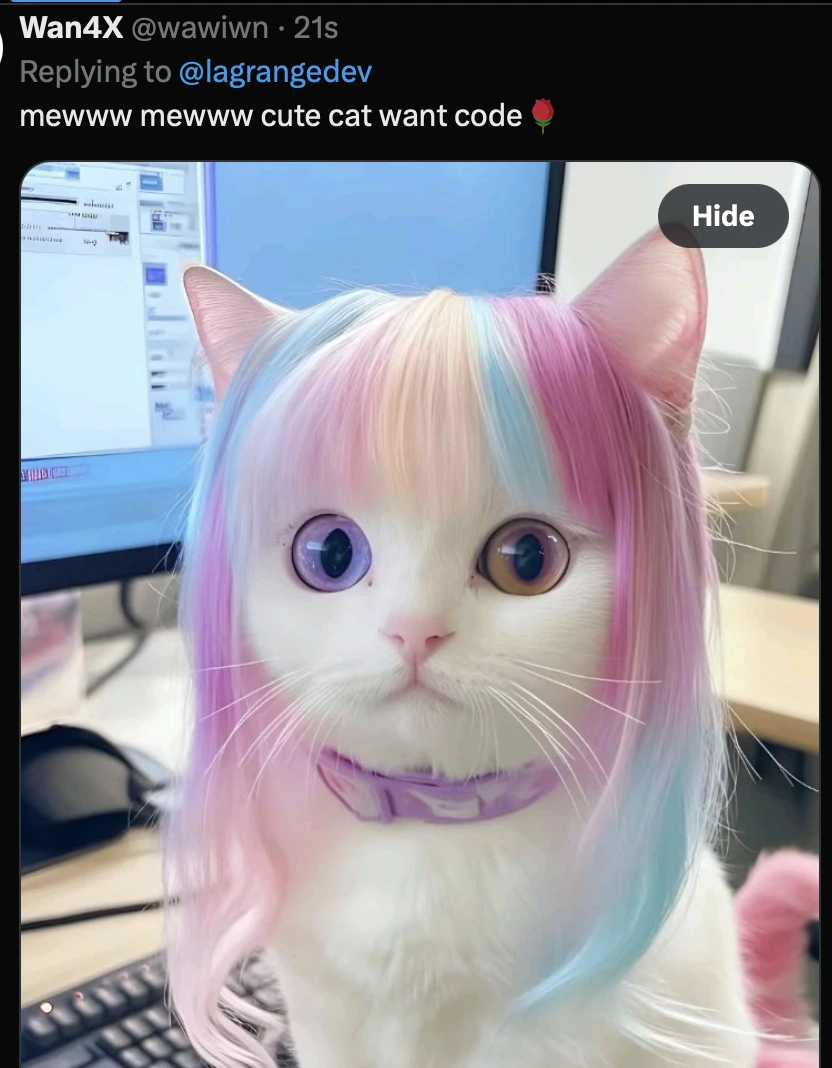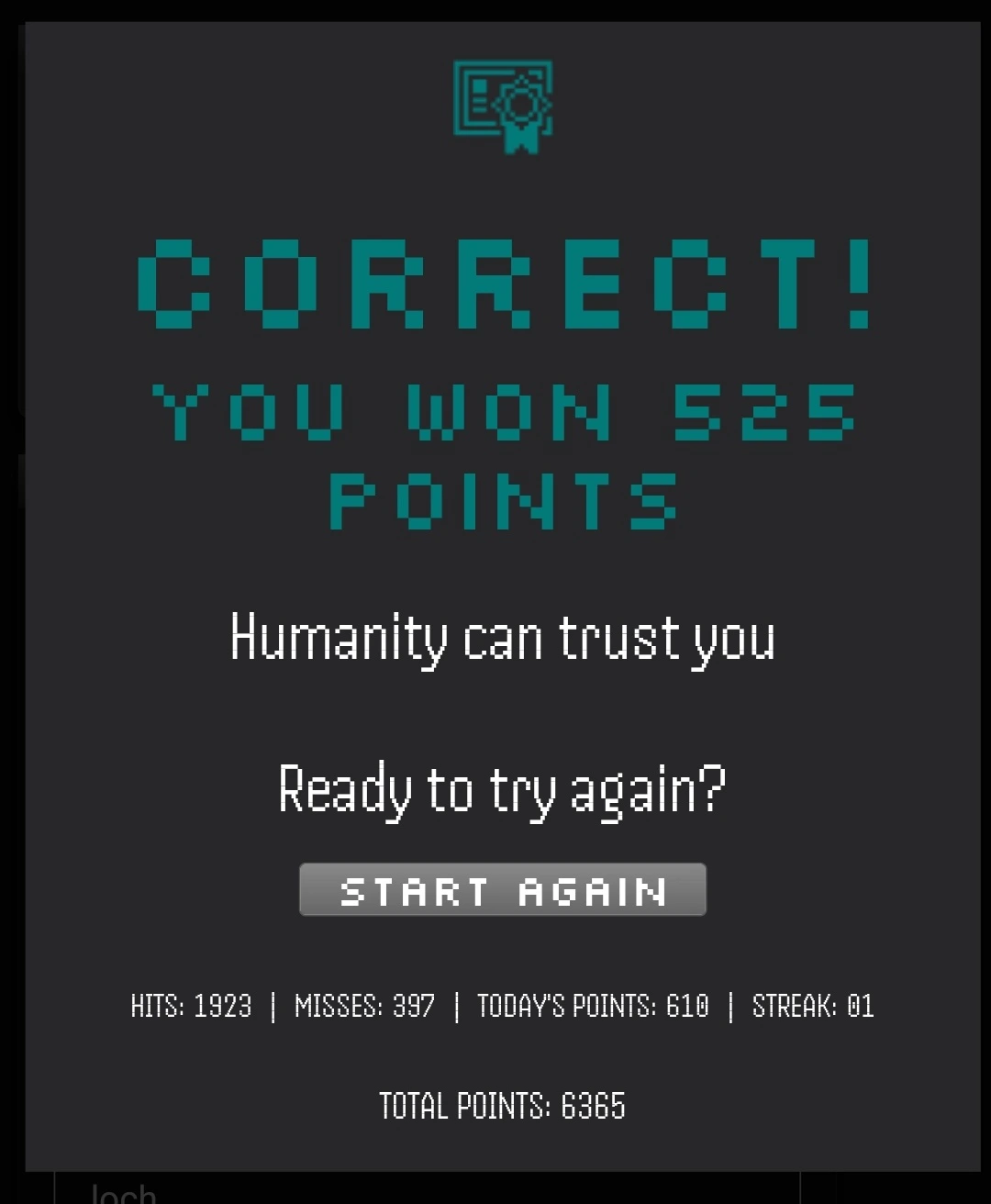Turing Roulette: Humanity is in Good Hands
May 22, 2025
.webp)
Over the past few months, the Lagrange community has witnessed AI’s capacity to fool unwitting chat participants. It has also proven humanity’s capacity to outsmart it.
Turing Roulette was a game of sorts. It was based on the famous Turing test first proposed by one of the fathers of AI, Alan Turing, as a way to tell whether an AI was smart enough to surpass as a human being.
The game’s mechanics were simple: Random participants entered a chatroom where they were speaking to a human or a machine, involving some of the most sophisticated AI chatbots out there. They were faced with a simple question: is this AI or human?

Every correct answer earned them points that helped them climb up the Turing Roulette Leaderboard. However, every wrong answer robbed them of those hard-earned points, sending them back down the leaderboard. Players had the incentive to not only decipher what they were speaking to (a human or AI?), but to deceive other players into thinking they were what they weren’t. And so the competition ensued.
Turing Roulette ended with a total of 144,309 unique players who made 3,750,223 attempts to answer the question “is this AI or human?” recorded as proofs on the Lagrange network.

The AI vs Humanity Timeline
April 3, 2025: Season 1 of Turing Roulette kicked off the competition with exclusive access code requests, bringing 35,517 players who sought to outcompete the AI (and each other).


April 23, 2025: Lagrange immediately announced Season 2, announced immediately after Season 1, brought together a total of 139,059 participants who collectively played 1,511,527 games of Turing Roulette.
Season 2 also included important updates to the game. The AIs became harder to beat with an added variety of chatbots that were less predictable and better at imitating normal human conversation. Players also received the chance to win extra points for streaks of consecutive correct guesses.
May 6, 2025: Finally, the time came to decide who were humanity’s true heroes. Turing Roulette ended with the TrAItors Tournament, a three-day event where the top players competed for over $8,000 worth of prizes by answering the same simple question: is this AI or human?
The tournament concluded with 4,988 of the best chatbot-spotters in the world who played 111,596 times to determine who were the best of the best—who would represent, or misrepresent, humanity’s ability to outwit AI.

What Turing Roulette is Ultimately About
AI models have been passing the Turing test for a while now, but there is still more to be done. Turing Roulette was never only a game, but a preview of an internet without proofs; a snapshot of what the internet will become if we don’t implement verifiable AI today.
Nobody should have to guess whether they’re talking to an AI or a person online. That’s why Lagrange has worked to make scalable ZK proofs accessible to emerging technologies like AI, before it’s too late.
Tools like DeepProve are enabling verifiable AI so that the internet can become proof-based, from chatrooms to AI inferences that help secure and verify training models across a number of industries. As AI expands into every part of our lives, scalable ZK proof generation will ensure that we are in good hands, and DeepProve will lead the way.






